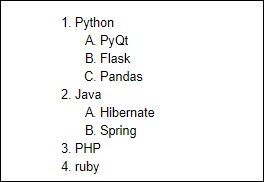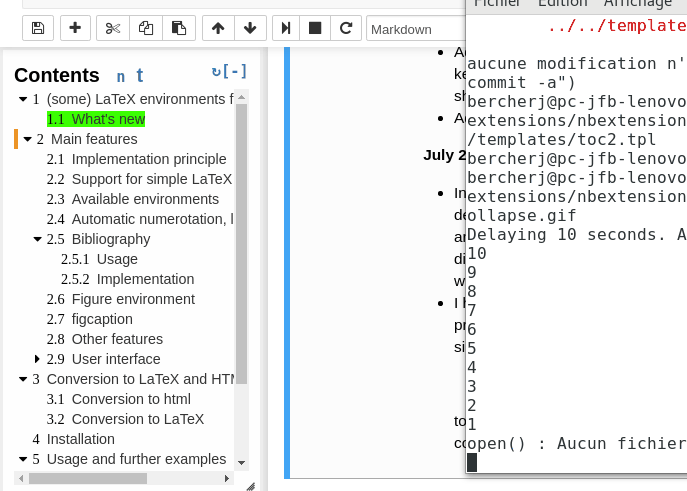Jupyterで「rpy2」という新しい環境を作成し、%% Rマジックを使おうとしましたが、インストールに失敗しました。 QN:jupyter-notebookで%% Rマジックを使用する方法は?プラットフォーム:MacOS High Sierra Steps ju. Now another list. Since Jupyter notebook version 5.0, in addition to referencing external file you can attach a file to a markdown cell.
You can open Jupyter Notebook by running jupyternotebook, or by opening Anaconda Navigator and clicking the Jupyter Notebook icon.
- Jun 06, 2020 Here’s how to format Markdown cells in Jupyter notebooks: HeadingsUse the number sign (#) followed by a blank space for notebook titles and section headings: # for titles ## for major headings ### for subheadings #### for 4th level subheadings; EmphasisUse the following code to emphasize text: Bold text: string or.string.
- Pre-Requisite: Installing the Jupyter Notebook. Pre-Requisite: Using the Jupyter Notebook. MarkDown Creating Horizontal Lines.
With Anaconda you can download and install 4 extensions for theJupyter Notebook which make the notebook easier to use:
- RISE
- Notebook anaconda.org (nb_anacondacloud)
- Notebook Conda (nb_conda)
- Notebook Conda Kernels (nb_conda_kernels)
Installing any of the 4 installs all of them. The _nb_ext_confpackage is also installed, which activates the extensions.
To get the extensions using Anaconda Navigator:
- Install and manage notebook extensions packages like any other packages. See Navigator user guide.
- To use the new extensions, on the Navigator Home tab, open Jupyter Notebook.
To install all Jupyter Notebook extensions from the command line, run:
Note
Jupyter Notebook List Markdown Code
These extensions were already installed in Anaconda versions 4.1 and 4.2. If you have Anaconda v4.1 or v4.2 installed, there is no need to install them separately. To begin using them, open a new or existing notebook.
To remove all Jupyter Notebook extensions, run:
Uninstalling nb_conda or any other 1 of the 4 extensions uninstalls all 4.

To disable Jupyter Notebook extensions individually without uninstalling them, run:
Note
Replace <ENV_PREFIX> with your root environment or another conda environment where the extensions have been installed.
You can access the install instructions for the RISE extension from anaconda.org.

In-depth documentation can be found there as well.
You must have an anaconda.org account for this extensionto work. Dress design fashion drawing. You can sign up for a free account at anaconda.org.
You can upload your notebook to your Cloud accountwith a simple button push:
You can use the Attach conda environment option described below to embed acopy of your conda environment as an
environment.yamlfile in thenotebook metadata.Sign in to Cloud:
If you are not signed in to Cloud, a dialog box appears asking for your Cloud username and password.
You may instead log in at the command line:
Note
This is recommended if you do not have a secure connection.
Open Jupyter Notebook, then open the notebook you wish to upload to Cloud.
In the top navigation bar, click the Publish to anaconda.org button:
In the dialog box that appears, select your username.
Type a description of the notebook for display on Cloud:
If you want the identical environment to be included when the notebook is downloaded and opened, select the Attach conda environment checkbox.
Click the Publish button.
After publishing, you can view the notebook or play the presentation on Cloud from the top navigation bar by clicking the Cloud button:
Your notebook on anaconda.org will look similar to this one:

For more information on Cloud, see ./././anaconda-cloud/index.
Create List In Jupyter Notebook Markdown

This extension provides conda environment and package access from within Jupyter Notebook.

To manage all environments:
While viewing the dashboard file manager, select the Conda tab, which shows your current conda environments:
Note Calibre synology.
To add a new conda environment, click the + buttonabove the environments list on the right side.
Select an environment by clicking its name.
In the package management section that displays, the icons from left to right have the following meanings:
- Search for packages in your current environment.
- Refresh your packages list.
- Update selected packages.
- Remove selected packages.
To manage the current kernel environment, in the Kernel menu, select Conda Packages, which displays a list of conda packages in the current environment:
For more information on using and managing conda packages, seeManaging packages.
This extension allows you to use conda environment-based kernels from the dashboard and the notebook’s Kernel menu. It makes the notebook aware of your conda environments, and it is required for Notebook anaconda.org and Notebook Conda.
Jupyter Notebook Markdown Bullet List
When creating a new notebook on the Files tab, you can pickany of the Python or R language kernels in any of your environments:
Jupiter Notebook List Markdown 2019
You can also change to those kernels on a current notebook:
